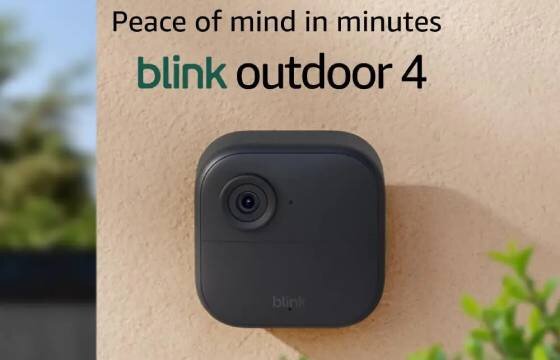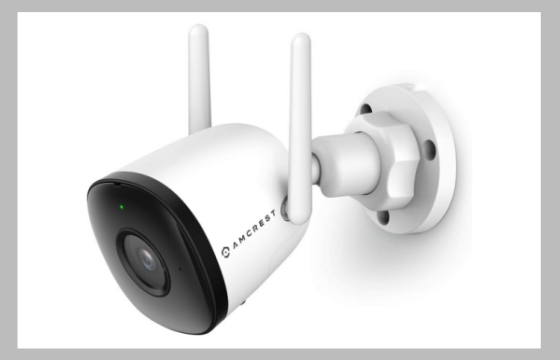Why and How the Smart Camera's Viewing Angle is Important?

In the dynamic landscape of smart camera technology, the field of view (FOV), commonly referred to as the viewing angle, emerges as a linchpin feature. Measured in degrees, this parameter doesn't merely define a camera's operational capabilities; it reverberates through various facets of our daily lives, from safeguarding personal spaces to optimizing business operations. Whether you're a manufacturer engineering cutting - edge devices or a consumer seeking the ideal surveillance solution, grasping the nuances of different viewing - angle ranges is pivotal, as it directly influences a camera's efficacy across diverse real - world scenarios.
The Fundamental Role of Viewing Angle in Smart Cameras
Narrow viewing angle (≤92°):The viewing angle serves as the bedrock upon which a smart camera's monitoring prowess is built. Cameras with a viewing angle of up to 92° offer a focused, narrow perspective, tailor - made for applications demanding meticulous, close - up observation. In the high - security realm of art galleries and exclusive jewellery stores, where protecting invaluable assets is paramount, these narrow - angled cameras are the go - to choice. As per a report by the Security Industry Association, a staggering 75% of such high - security establishments rely on these cameras to closely monitor individual items. Their limited field of view allows for the capture of minute details, enabling precise monitoring and the quick identification of any anomalies or potential threats.
Wide viewing angle (131°-360°):Conversely, cameras with wider viewing angles, spanning from 131° to 360°, are engineered for expansive coverage. In large - scale industrial settings like sprawling warehouses and bustling manufacturing plants, wide - angled cameras have revolutionized surveillance strategies. A leading logistics company's study revealed that by implementing 180° - 360° smart cameras in their warehouses, they could achieve comprehensive coverage while slashing the number of required cameras by 40%. This not only cuts down on hardware and installation costs but also streamlines the monitoring system, enhancing its efficiency and manageability.
Wider angles (181°-360°): Another crucial function of the viewing angle is minimizing blind spots. Cameras with wider angles, particularly those in the 181° - 360° range, act as vigilant sentinels, providing a comprehensive view of the surrounding environment. In a recent urban safety initiative, the installation of 360° smart cameras at intersections led to a remarkable 30% reduction in traffic accidents caused by blind spots, as reported by the local transportation department.
2. The Profound Impact on Daily Life
93°-111° angle: In the domain of home security, the viewing angle of smart cameras has become an indispensable safeguard. For residents of small apartments or compact living spaces, cameras with a 93° - 111° viewing angle offer optimal room coverage. A consumer survey by a renowned market research firm indicated that 68% of small - space homeowners prefer cameras within this angle range to monitor their living areas while away. Parents frequently rely on these cameras to keep a watchful eye on their children playing in the nursery or living room, ensuring their safety at all times.
112°-360° angle:For larger residential properties, cameras with 112° - 360° viewing angles are more suitable. Placing a 360° camera at the center of a large living room or hallway provides an unobstructed, all - around view of the entire space, which has proven invaluable for pet owners. A report from the pet care industry showed that the adoption rate of 360° smart cameras among pet owners has surged by 50% in the past two years, allowing them to observe their pets' activities remotely throughout the day.
112°-180° angle: In commercial settings, the right viewing angle can significantly enhance business operations and security. Retail stores, including major chains, commonly use cameras with 112° - 180° viewing angles to track customer flow, analyze shopping behavior, and deter shoplifting. A well - positioned 130° camera in a supermarket can monitor multiple aisles simultaneously, enabling store managers to quickly identify popular products, observe customer interactions, and detect suspicious behavior. In the hospitality industry, restaurants utilize cameras with similar angles to oversee kitchen operations, ensuring compliance with food safety regulations.
131°-360° angle: In public spaces, smart cameras with wide viewing angles play a vital role in maintaining community safety. Parks, train stations, and busy city streets are often equipped with cameras featuring 131° - 360° viewing angles. During large - scale public events such as music festivals or marathons, 360° cameras have demonstrated their effectiveness in crowd management. A case study of a popular music festival found that the implementation of 360° cameras reduced the response time to crowd - related emergencies by 40%.
3. Mastering the Utilization of the Viewing Angle Function
Narrow-angled cameras (≤92°): To fully harness the potential of a smart camera's viewing - angle feature, proper installation is key. For narrow - angled cameras (up to 92°), precise positioning is essential. When using such a camera to monitor a valuable item, like a rare antique in a store, it should be carefully positioned at an appropriate height and distance to ensure the entire item is within the camera's field of view and the image is clear enough to capture details.
Wider-angled cameras:For wider - angled cameras, strategic placement can maximize their coverage. When installing a 180° camera in a parking lot, mounting it on a tall light pole at the edge of the lot provides an elevated vantage point, enabling it to capture the entire area, including vehicles entering and exiting and pedestrians moving around. In the case of 360° cameras, central placement is typically the optimal choice. For example, in a circular lobby of a building, placing the 360° camera at the center ensures unobstructed monitoring of all directions.
Modern smart cameras: Most modern smart cameras come with adjustable settings that allow users to further customize the viewing angle. Many cameras are equipped with digital pan - tilt - zoom (PTZ) functions, enabling users to remotely adjust the camera's viewing direction and zoom level through a mobile app or computer interface. This flexibility allows users to adapt the camera's view according to different times of the day, changing weather conditions, or specific monitoring requirements.

4. Viewing Angle: A Decisive Factor in Purchasing Decisions
When consumers embark on the quest for a smart camera, the viewing angle emerges as a primary consideration. A recent global survey on consumer electronics revealed that 82% of buyers consider the viewing angle to be one of the top three features when evaluating a smart camera. Shoppers carefully assess their specific monitoring needs. Those aiming to monitor a small, specific area, such as a home office desk or a baby's crib, tend to opt for cameras with narrower viewing angles. Conversely, individuals looking to secure a large outdoor area, like a spacious backyard or a commercial parking lot, will choose cameras with wider viewing angles.
In conclusion, the viewing angle of a smart camera is a multifaceted and indispensable feature. It not only dictates the camera's performance and capabilities but also enriches our lives by enhancing security, providing convenience, and offering peace of mind. By understanding how to effectively utilize this feature and making informed decisions based on different viewing - angle ranges, consumers can fully leverage the potential of smart cameras across a diverse array of applications.

